As I walk through the narrow lanes of Maheshwar, a symphony of sounds fills the air. It is the rhythmic beating of the heart and soul of this historic town. The sound of cotton and silk threads meticulously woven into exquisite Maheshwari sarees. These sarees embody the essence of Maheshwar, representing centuries of weaving tradition and artistic finesse.
As a part of the design discourse, I had always heard of handloom and handicraft in the context of dying crafts that needed revival or restoration. The prevailing narrative often painted a picture of younger generations showing little interest in continuing these traditional crafts due to limited scope and economic viability.
When I arrived in Maheshwar, I carried the expectation that the handloom weaving cluster here would need saving and support. However, to my surprise, the reality in Maheshwar was quite contrary. Witnessing the weaving process firsthand, and then interacting with the weavers was a humbling experience.
According to Prayaas, a study published by the Ministry of Textiles in Collaboration with the National Institute of Fashion Technology (NIFT) in 2015 estimated the Maheshwari weaving cluster to have 2668 working handlooms and approximately 8000 weavers attached with the profession producing around 32 lakh meters of fabric every year. The study also reported a significant increase in wages wherein weavers in 2014-15 earned Rs. 515 per sari as against Rs. 313 in 2011-12. Today, as of 2023 the weavers earn around Rs. 800 for a basic sari with a simple border. The cluster is estimated to have more than 3000 weavers. One can attribute the success of Maheshwar’s handloom weaving cluster to several factors from the rich legacy of royal patronage to the growing recognition from conscious consumers and established brands like Fab India and Taneira.
Weaving in Maheshwar owes its genesis to Queen Ahilyabai Holkar who is said to have brought skilled artisans from Surat, of the “Maaru” community who belong to Baluchistan and traveled via Sindh (Pakistan) to Gujrat and Rajasthan; to train the local artisans in an attempt to sustain her state’s economy.
These master weavers brought with them their expertise and craftsmanship. At the same time, they blend it with local weaving traditions to create the iconic Maheshwari sarees. This was the first of the many migrations that set into motion the evolution of the weaving practices in Maheshwar. Ever since communities that have migrated from different places have settled in different parts of Maheshwar. A couple of the indigenous communities like the Kewats (boat rowers) have taken to the craft as well.
What started as the 9-yard-navari saris in Ahiliyabai’s time have become one of the most affordable handloom product ranges. What was once garbh reshmi and neem reshmi (a type of fabric with a specific technique involved) got lost in time to give way to sarees that incorporate a blend of traditional and contemporary motifs, making them popular among buyers. The material, the techniques and the communities have all evolved with time yet what remains common is their identity as Maheshwari and the resilience to remain economically viable.
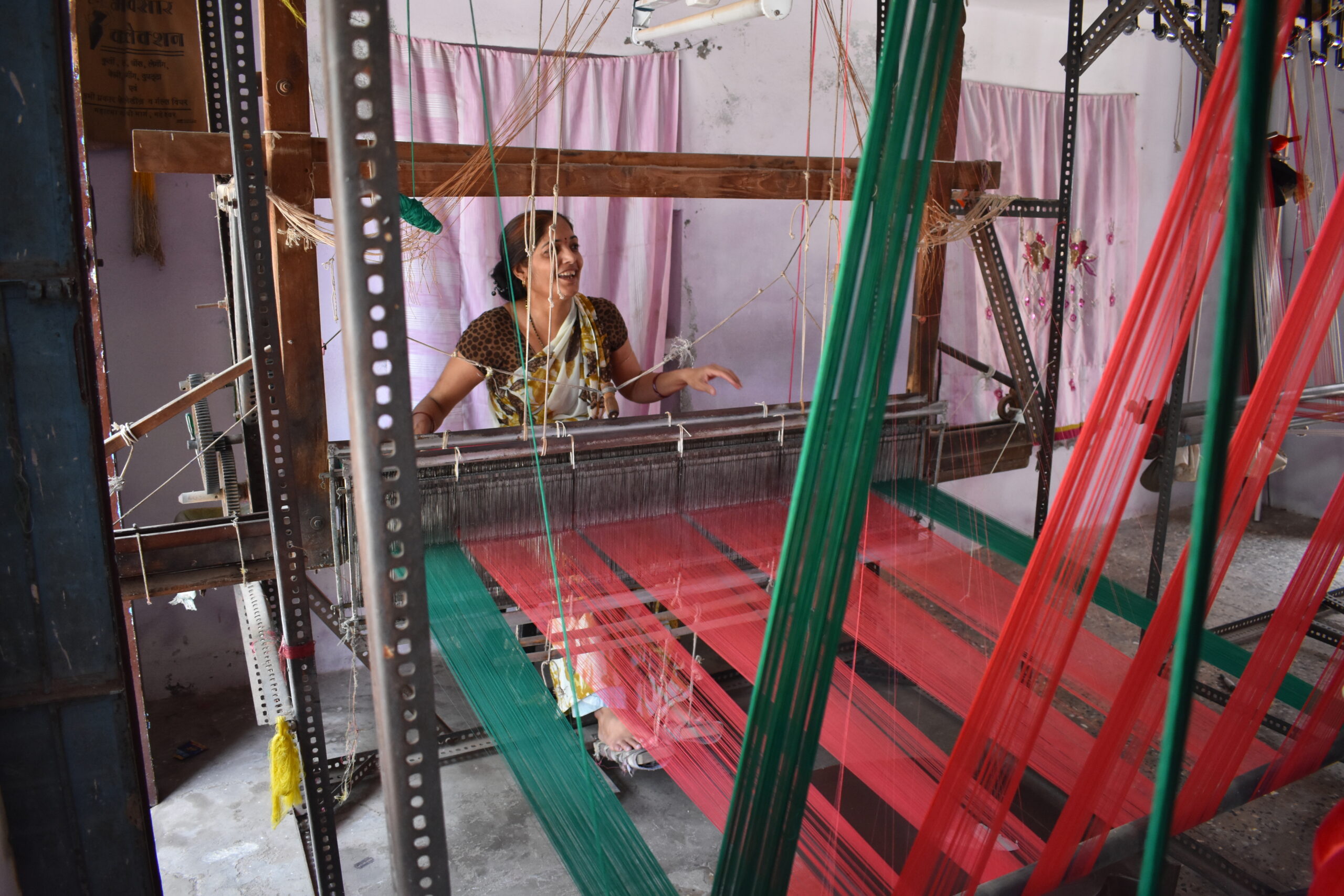
The efforts of organizations like WomenWeave and Rehwa have provided vital support to the weavers, ensuring fair wages, training programs, and market access, bringing them to a wider audience, and opening new avenues for the weavers. To support the weaver community in the 1970s, Sally Holkar built a colony exclusively for them, providing them with a dedicated space to live and work. This gesture not only preserved the art of weaving but also provided a stable livelihood for the weavers and their families.
The weaver’s colony, Ahilaya Vihar retains its old-time charm with some of the traditional houses and looms being inside every home. Having a loom set up in houses has promoted a lot of women weavers that learned weaving post-marriage and utilize the opportunity to work from home.
The art of weaving in Maheshwar intricately links to the gift-giving tradition. Ahilyabai Holkar herself had commissioned the weavers to create exquisite sarees for the women of the royal family. As a result, the sarees became a symbol of status and elegance, cherished by royalty, embraced by women from all walks of life. In recent years, the resurgence of handloom and growing appreciation for sustainable fashion has brought Maheshwari sarees into limelight.
One of the reasons behind the economic viability of Maheshwari saree weaving is its unique selling proposition. Maheshwari sarees are known for their distinctive designs, lightweight texture, and the use of fine silk and cotton yarns. The sarees incorporate a blend of traditional and contemporary motifs, making them popular among buyers. The demand for Maheshwari sarees both within India and internationally ensures a steady market, contributing to economic sustainability of weavers.
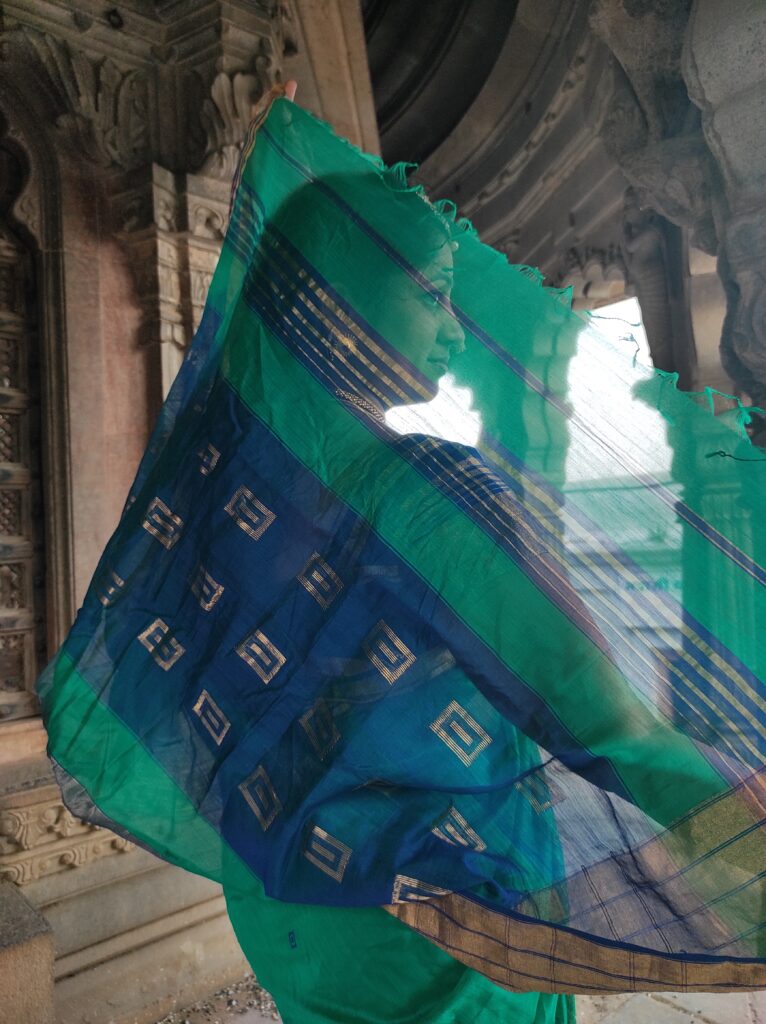
Another aspect of economic viability is efficiency and speed. Maheshwari sarees are relatively quick to produce compared to other handloom textiles. While the efficiency and speed of producing Maheshwari sarees contribute to their economical nature, it’s important to note that this should not undermine the skill, craftsmanship, and time invested by weavers. Recognizing the value and effort behind these sarees is crucial in appreciating and supporting the handloom industry.
Between 2012 and 2015, more than 200 weavers have migrated to Maheshwar due to the growing opportunities in its handloom enterprises.This is unusual and contrary to the trend in a sector that is in steep decline.
Weaves of Maheshwar
Usha Dhakate, one of the weaving trainers at Kala Maitri migrated to Maheshwar with her husband, in 2012. This was after her brother-in-law insisted on the booming scope of weaving in Maheshwar. Even though both Usha and her husband come from families that have practiced weaving Kosa silk in Baloda, a town in the Janjgir Chanpa district of Chattisgarh, she learned how to weave only after coming to Maheshwar. She jokes about how she’d run to the loom everytime her husband got up even if for a couple of minutes. Then she would end up helping her husband knot all the threads she would break. And that’s how she learned to weave.
She explains, “Baarish mai Kosa sookhta nahi hai, isliye dhandha down rehta hai. Yahan to saal bhar dhanda chalta hai”, as one of the reasons why moving to Maheshwar has proved to be beneficial. Back in Chattisgarh, the seths (master weavers) would provide them with silk pods. They had to be boiled and turned into yarn by rolling it on the thigh. It’s a fairly labor-intensive practice that paid them Rs 3000 for every 35m of yardage. On the other hand, weaving a 6-meter Maheshwari Sari that pays them at least Rs 800.

As the sun sets over the tranquil town of Maheshwar, the rhythmic beats of the looms continue to echo. They tell tales of a rich cultural heritage and the passion of its people. The Maheshwari sarees, woven with love and skill, continue to adorn women with grace and elegance. And the heart and soul of Maheshwar remain intricately woven into the fabric of its handloom heritage. The cluster presents a utopian future for handloom industry only to leave me thinking if everything is as great as it appears. Or if there are other layers that need to be brought to light to weave a more nuanced tapestry of the cluster, its craft, and craftspeople.

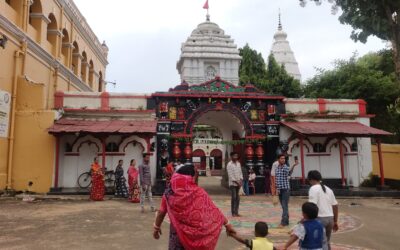
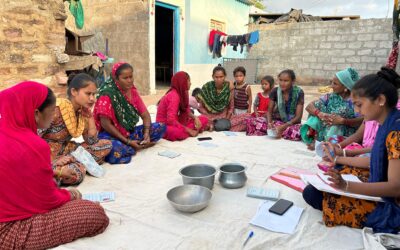
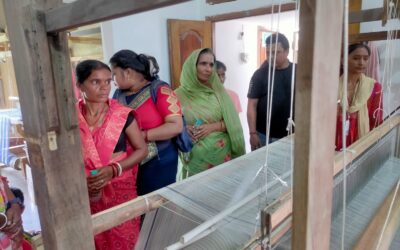
0 Comments